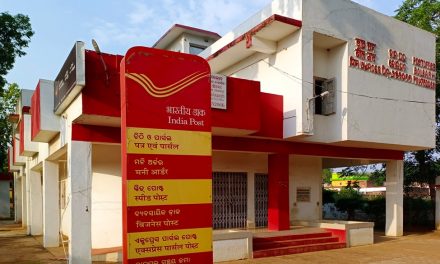
E-messaging for the rest of us
E-messaging for the rest of us
Spurred by a few innovative leads from private industry, the Indian postal department steps into the Internet Age with a slate of e-nabled services. Anand Parthasarathy explains why it is now time to say “good bye snail mail, hello email!''
NOT ALL the success stories of Information Technology are written on the hightech frontlines, with state- of-the-art tools and mega-dollar budgets. Sometimes, the most meaningful projects in a country like India can emerge from an idea as simple as reaching a message from here to there – especially if `there' means 12,000 remote villages.
On May 1, a small landmark was crossed when Deltagram the satellite-and-phone messaging service launched by the Chennai- based company four years ago, delivered its 10 millionth message. No big deal one might think, in this age of emails whizzing across the globe in their millions, every minute.
And one would be wrong.When Mr R Kothandaraman, a chartered accountant, launched his company he was aware of one reality: it was all very well to wax eloquent about the telecom revolution and the explosive growth of the Internet; but those in India who could access these technologies were a pathetically small minority. Over 83 per cent of Indians lived in villages. Teledensity – the number of Indians who owned a telephone connection was less than 2.86 per hundred. Of this only a small fraction had Internet access.
Any revolution in terms of Net or phone-based connectivity would continue to exclude a huge majority – the 'rest of us' who were not among the “wired few''. Surely this was a social challenge as well as a market opportunity?
Deltagram quickly established a nationwide network of 15,000 destinations backed by chain of satellite earth stations. At its simplest level, Deltagram offered to convey brief messages delivered to its nearest franchisee, at Rs 5 a go to any phone, fax or pager number in India in about 15 minutes.
But there were about a dozen variants – including a facility, “Gram India'' whereby one could send emails messages which would be door- delivered to an address where there was neither phone nor Net connection.
Other options enabled customers who might not themselves own a fax machine to convey a fax message at Rs 15 a page. “Call India'' a more recent facility enabled those without an internet connection to receive messages on phone or fax from any where in the world; to write or dictate a message that would be sent by email to any destination worldwide.
Deltagram's USP was: “No phone, no fax, no Internet? No big deal! You can still exploit these technologies at an affordable price.'' And their target is to cover every one of India's 27,000 pin code destinations.
Deltagram's down-to-earth concept made so much sense that this month the Indian postal department is set to launch a very similar service – to be known as e-post. The aim is to connect the Internet haves with the have-nots. A customer any where in the globe can send an email to clients, or friends, regardless of whether the addressee has phone or email facility.
The mail can be addressed to the delivery post office which has an email address based on its pin code. Thus the email address of Mumbai GPO 400001 is [email protected] and the email for Hyderabad GPO 500001 is [email protected] and so on.
The scheme is being initially launched in five states: Andhra Pradesh, Kerala, Goa, Maharashtra, and Gujarat. The website of the Indian postal department, www.indianpostoffice.net,or www.indiapost.org, contains full details of the new service. One has to register online and either use a credit card ( for which there is a 5 percent surcharge) or buy ePost prepaid cards at post office in multiples of Rs 250.
ePost will charge Rs 10 for an A4-sized page. Even without being an account holder one can send such email messages from any of the 200 plus post office in the five states.
The message will be printed out and door- delivered within hours at the destination. The ePost scheme is a joint venture of Indian Posts with the Hyderabad-based Nettlinx Ltd. The facility will gradually be extended to all states in the country.
In other ways too, Indian postal services are slowly but surely shedding the traditional `snail mail' image. Eight postal circles – Maharashtra, Aurangabad, Pune, Goa, Assam, Kerala, Kolkata and UP – maintain their own websites with useful links and information.
The aurangabadpost.com site has track-and-trace facilities where one can keep tabs on speedpost articles sent abroad or sent to Aurangabad. The Mumbai GPO earlier this year launched international satellite-based money transfer operations. Since the department already owns 75 Very Small Aperture Terminals (VSATs) it plans to deploy them nationwide to support savings bank and postal insurance networking.Indeed it is only now registering with authorities in many countries that the post office network is a ready made infrastructure to bridge the “digital divide''.
The French postal department has joined hands with FedEx, Singapore Post with TNT and the German DeutschePost with DHL to extend the reach of their parcel services, and profit from removing duplication of services. Indian post offices – with 154,000 outlets – constitute a massive infrastructure, waiting to be e-nabled. Indications are this will happen very soon.
`Click, don't lick'
One direction that some postal systems abroad have taken is towards the e-stamp: allowing customers to pay for and print digital stamps in the comfort of their homes and offices, directly from the Internet to the envelopes. In 1997, the US postal service allowed private American companies like E-Stamp Corporation and Click Stamp ( a subsidiary of Pitney Bowes) to offer digital stamp solutions. On April 30 this year, E-Stamp's name and operation was acquired by the California-based Stamps.com – but the service continues.
A typical solution consists of software that allows the user to buy postage credit and download it into a private virtual vault. He or she can then debit this vault to print out stamps as and when needed. It is not very different from the postal franking machines authorised by Indian postal department – except that cumbersome electromechanical hardware has been replaced by one's PC and printer. E-stamp has further simplified the process by incorporating the stamp printer utility into Microsoft Word.
The system has potential beyond the convenience factor: the post office saves a massive expenditure in printing, gumming and perforating stamps; there is scope to licence customized stamps – including commercial messages – for an additional fee.
Somewhere between the pure postal operation of e-stamps and the Deltagram/e-Post type of service, another typically 'desi' niche is being nursed by a dozen canny Indian operations, mostly NRI- based.
This addresses the need of many Indians to keep in touch with friends and relatives – often sons and daughters studying or working abroad. Internet telephony will become a legal reality only next year. Meanwhile the cost of a regular ISD telephone call is still unaffordable by many, thanks to monopoly pricing by Indian government agencies. There is no substitute however to hearing the actual voice of a loved one.
One service that filled this need is Navinmail ( short form for New Applications for Voice over INternet). Started in 1998, the service is a big favourite with Indians in the US and works like this: for a monthly fee of Rs 250 equivalent, which can be paid in the US, one can make 50 message calls. The message up to 90 seconds can be spoken on the phone or conveyed over Internet voice mail to a toll free number.
The message is sent within hours ( as a big batch) and delivered to the recipient in India – either as an email or replayed over the telephone. An answer can be spoken by the recipient and will be sent back to the originator, debiting his account. True you are not “live'' with the person on the other end, but for thousands of Indian families, navinmail is a godsend.
Other shrewd operators have homed in on the difficulty that many Indians face in handling English language mail. Services like mailjol.com, and epatra.com, offer to transcribe Indian language messages written in Roman script into the original language font before forwarding. Another service, bharatmail.com, addresses an even more basic problem: it scans email written from abroad, and sends the printouts to addresses in India by ordinary post. (For a useful roundup of, and live links to, such email services see the article “Innovative Desi Mail'' by M Madhukar Reddy at the ZDNetIndia.com portal (www.zdnetindia.com/news/features/stories/6297.html.)
The variants are limitless because Indians are only now discovering that they need not necessarily be disadvantaged in this Internet Age, because government is slow or unwilling to imaginatively exploit such technologies for the general good. Other Indians are there to work within the law and offer attractive solutions.
If e-post takes off in a big way here, it will be the surest indication that the message has finally sunk into Official India: Internet is for enabling the people. Others are already doing it. If you can't fight them, join them.













